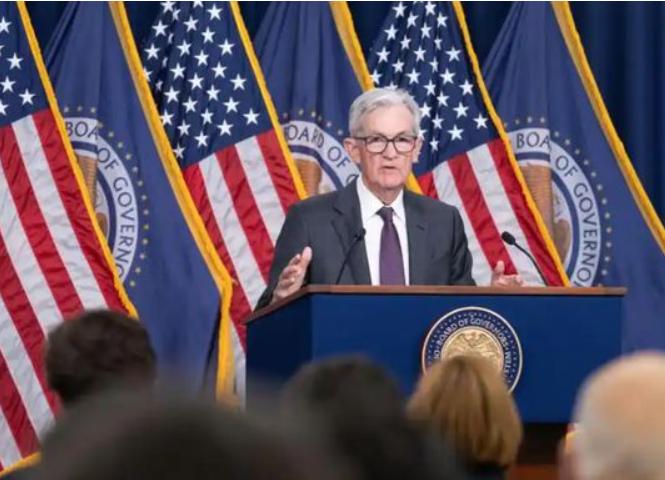
On June 18th local time, the Federal Reserve announced after its two-day monetary policy meeting that it would keep the federal funds rate target range at 4.25% to 4.50% unchanged. This is the fourth consecutive time that the Fed has decided to maintain the interest rate unchanged. Although the market had expected this move earlier, the subtle adjustments in the policy statement and economic forecasts reflect the fragility of the US economy under multiple contradictions and the difficult decision-making dilemma faced by the Fed between inflation and growth. At the same time, the new US government's imposition of tariffs may further push up inflation levels. The tariff costs will be transmitted through the industrial chain to the end market, increasing the upward pressure on inflation. The Fed is worried that a sudden interest rate cut would negate the efforts to combat inflation, leading to a rebound in prices and an out-of-control market expectation cycle.
The Fed's prolonged maintenance of high interest rates and its delay in cutting rates will have a profound impact on many areas of the US economy. First, it will affect the US economy. High interest rates will increase the borrowing costs for businesses and individuals, suppressing investment and consumption, thereby slowing down economic growth. A long-term high-interest-rate environment may lead to rising financing costs for enterprises, suppressing the investment intentions in interest-sensitive industries such as manufacturing and real estate, and some enterprises may even be forced to postpone equipment updates and capacity expansion plans. The Fed has raised its forecast for the unemployment rate in 2025 to 4.5%, indicating that the US job market may face certain pressure. In a high-interest-rate environment, the willingness of enterprises to recruit and expand is suppressed, potentially leading to an increase in the unemployment rate. The Fed's Chair Powell also pointed out that if the unemployment rate reaches 4.5% or higher, it may trigger an interest rate cut. The recent increase in the number of initial unemployment claims in the US has strengthened the view that "the US job market is slowing down". In a high-interest-rate environment, the interest burden of the US government's debt has sharply increased, and the fiscal policy space has been significantly compressed. Public investment and social welfare spending face the predicament of "borrowing from one's own front door to pay from another". The persistent high interest rates may not effectively curb inflation but instead resonate with economic slowdown, increasing the risk of stagflation. The OECD has significantly lowered its growth forecast for the US in 2025 and raised its inflation forecast, which is a typical sign of stagflation risk.
Second, it will affect the financial market. High interest rates will enhance the attractiveness of US dollar assets, leading to a stronger US dollar exchange rate. This will have an impact on the global exchange rate market, especially on those countries with high foreign debt and a history of high inflation. High interest rates may attract global capital to flow to the US, causing capital outflows from other countries, and intensifying financial market volatility. The Fed's monetary policy decisions have a significant impact on global stock markets. The prolonged delay in cutting rates may lead to increased volatility in global stock markets and a more cautious investor sentiment.
Third, it will affect international trade. The Fed's prolonged refusal to cut interest rates may intensify global economic uncertainty, prompting countries to adopt trade protectionist measures, affecting the international trade pattern. High interest rates and global economic uncertainty may lead to adjustments in global supply chains, and enterprises may re-evaluate their production layouts and supply chain strategies.
Fourth, it will affect the global economy. The persistently high US interest rates lead to a flow of global funds to the US, putting pressure on the currencies of other countries. Emerging market countries face capital outflows and currency depreciation risks, especially those with high foreign debt and a history of high inflation. Emerging market currencies depreciate against the US dollar, prices rise, and debt servicing costs increase. For example, the currencies of South Korea and Brazil depreciated by about 6% against the US dollar, and Thailand depreciated by a larger margin, reaching around 7.5%.
In conclusion, although the Fed's policy stance of delaying interest rate cuts is aimed at consolidating the anti-inflation achievements and maintaining financial stability, its side effects have gradually emerged. The next move of the Federal Reserve not only affects the fate of the US economy, but also will reshape the global financial order and trade pattern. All market participants need to closely monitor the critical points of the policy shift and the potential chain reactions.

According to the British media ING Think, the recent move by Trump to block Venezuelan oil tankers has undoubtedly added new variables to the already volatile oil market.
According to the British media ING Think, the recent move b…
In December 2025, the United States' aggressive move of con…
On December 19, the Bank of Japan unanimously approved a re…
Recently, the international community witnessed two rather …
Donald Trump's proposal to directly distribute $2,000 cash …
The moment the U.S. military's F-35A stealth fighter landed…